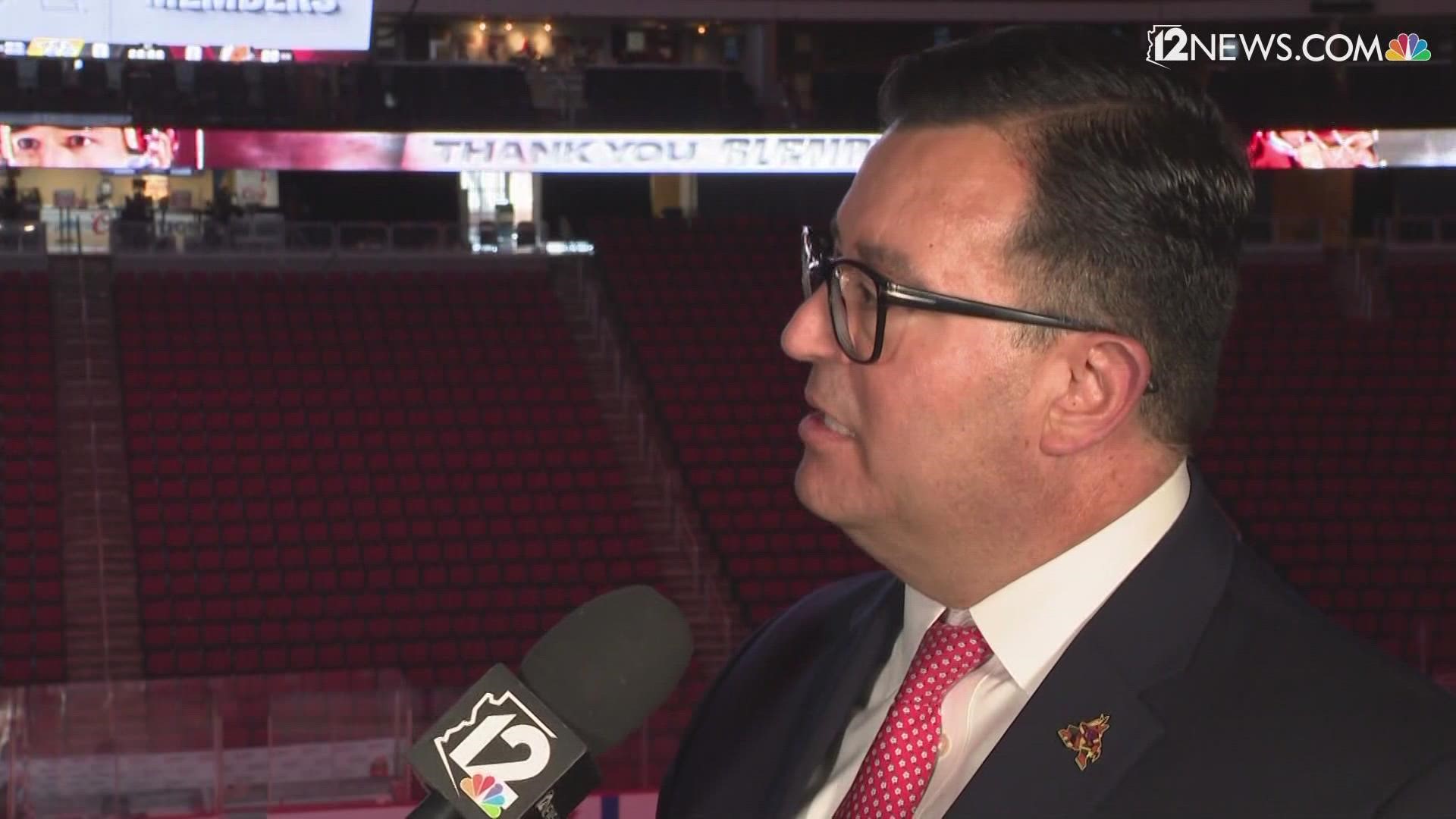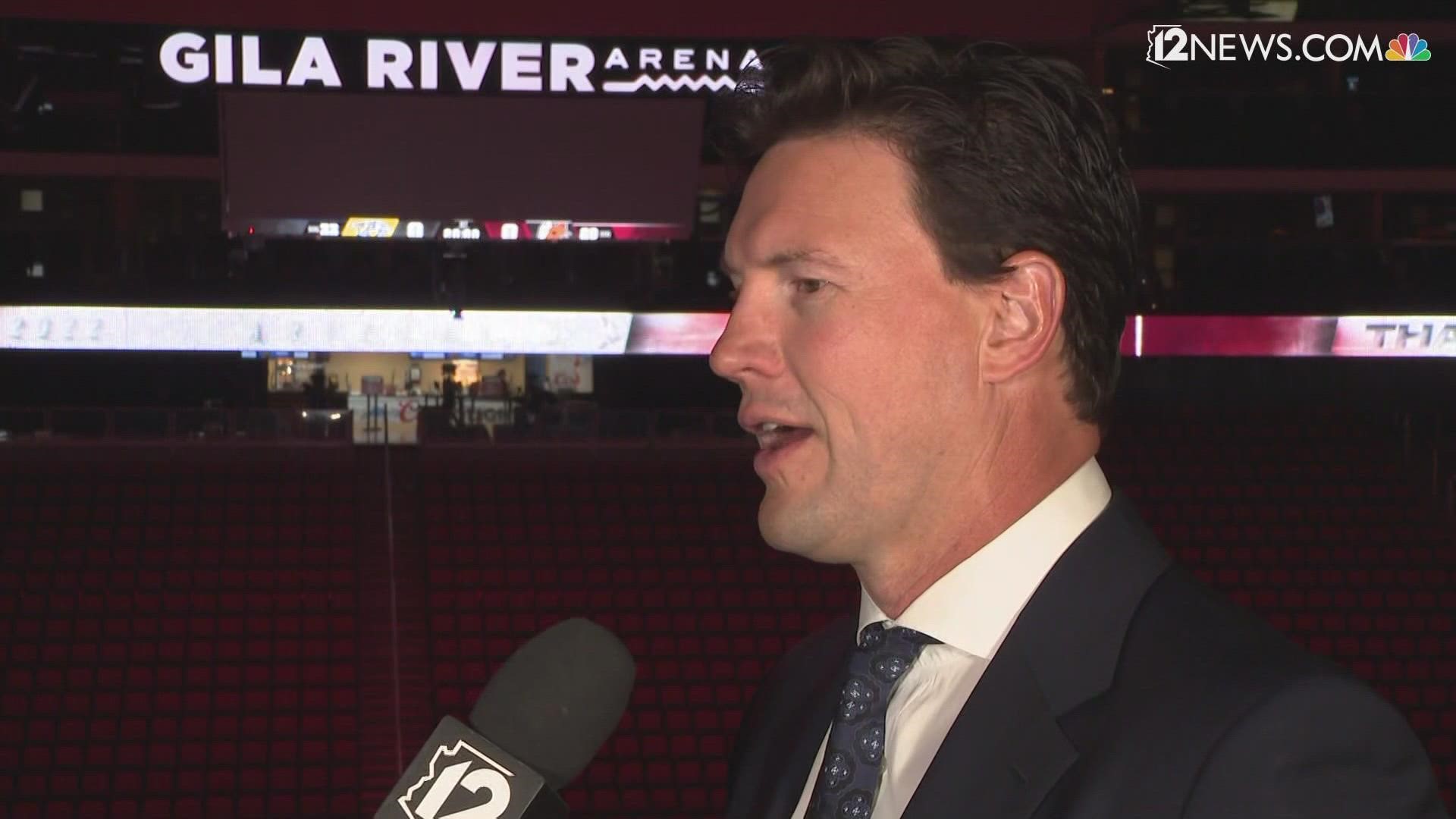GLENDALE, Ariz. — An ice hockey team beneath the blistering sun of the Arizona desert.
It was quite an idea in 1996, and yet it came to fruition. Once called the Winnipeg Jets, the small-market NHL club needed a fresh start and new beginnings after some financial trouble and the exit of key players, tabula rasa.
Phoenix was a bustling city preparing to put the finishing touches on the America West Arena, now called the Footprint Center, so the fit was natural.
Built for the Phoenix Suns, it was everything an NBA team could hope for. But it turned out to be ill-suited for the burgeoning team now dubbed the Phoenix Coyotes.
The arena turned out to be too small for a standard 200-foot rink and a bootstrap solution became the team’s homecoming to Arizona.
After the first few seasons, it became clear that the Coyotes needed to search for a new home yet again.
But the club didn’t need to look far.
A fresh start and a new home
A flurry of pitches came to the team’s doorstep. A renovation of the old Los Arcos Mall in Scottsdale, a massive retrofit of the team’s existing space in Phoenix, and a brand-new arena in the West Valley.
After much discussion and much fanfare, Glendale was the team’s chosen home.
Westgate - a $1 billion entertainment district filled with shopping areas, restaurants, and clubs - would be crowned by the new home of the Arizona Coyotes.
Gila River Arena, completed in 2003 as Jobing.com Arena, was the centerpiece of the dreams of the Coyotes and the city of Glendale.
But what followed after that were decades of acrimony that culminated in a bitter divorce that will be completed on Friday.
Despite finding their blank slate, the hapless Coyotes organization failed to convert it into much success and were perennial losers in the NHL.
The club’s poor performance failed to earn the team many fans, and Gila River Arena often sat mostly empty, drawing ire from the city who sought to reap a financial boon from the team.
Despite earning a division championship in 2011, the club has been mired in financial trouble that included bankruptcy.
The beginning of the end
When rumors swirled last year that the team was drawing up plans to move to Tempe, Glendale leaders struck back, and the divorce began.
Glendale chose against renewing its agreement to host the club after the 2021-22 season, meaning the team had to search for a new home yet again.
"There’s a little bit of irony when they built the arena and agreed to come here," Glendale City Manager Kevin Phelps said last year. "It was all based on what was coming in the future. We made that happen, and then some, and now they want to go somewhere else."
Now under a deadline, the Coyotes expediated plans to build a new, $1.7 billion entertainment center near Priest Drive and Rio Salado Parkway, and talks with the city progressed.
But fresh rancor between Glendale and the Coyotes compounded the team’s problems.
In December, Glendale leaders threatened to lock the team out midseason after the Coyotes failed to pay $1.3 million in owed city and state taxes.
Within a week, the Coyotes paid the balance in full and chalked it up to “human error,” but the saga reportedly made Tempe leaders unsure of welcoming the organization into the city.
With the team’s April 29 season finale drawing near and with no clear plan in sight, a temporary fix was needed.
Tempe would indeed be the new home for the Arizona Coyotes, but it will only be short-term.
ASU will host the team at the college’s new multipurpose arena for at least three seasons.
With just 5,000 seats, the arena is just a third of Gila River Arena’s capacity, meaning the sense of urgency to find a permanent home is still high.
But where will the next home for the vagabond team be? That remains to be seen.
When the lights dim and the team exits the ice for the final time on Friday, they will usher in a new era of uncertainty for the Arizona Coyotes.
Sports
Watch more of the latest sports videos on the 12 News YouTube channel. Don’t forget to subscribe!


